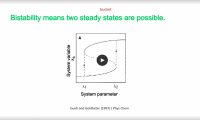energyandstruct
Member
- Joined
- Nov 27, 2017
- Messages
- 960
Robert Phair releases details on metabolic trap hypothesis. Early data supports the hypothesis! • r/cfs
A reddit thread isn't the best way of presenting it, but these findings and theory are very important I think.
This is all based on Phair's presentation in this video: (i'll get exact time etc soon)
ME/CFS Symposium at Stanford 2018 on Livestream
A reddit thread isn't the best way of presenting it, but these findings and theory are very important I think.
This is all based on Phair's presentation in this video: (i'll get exact time etc soon)
ME/CFS Symposium at Stanford 2018 on Livestream

